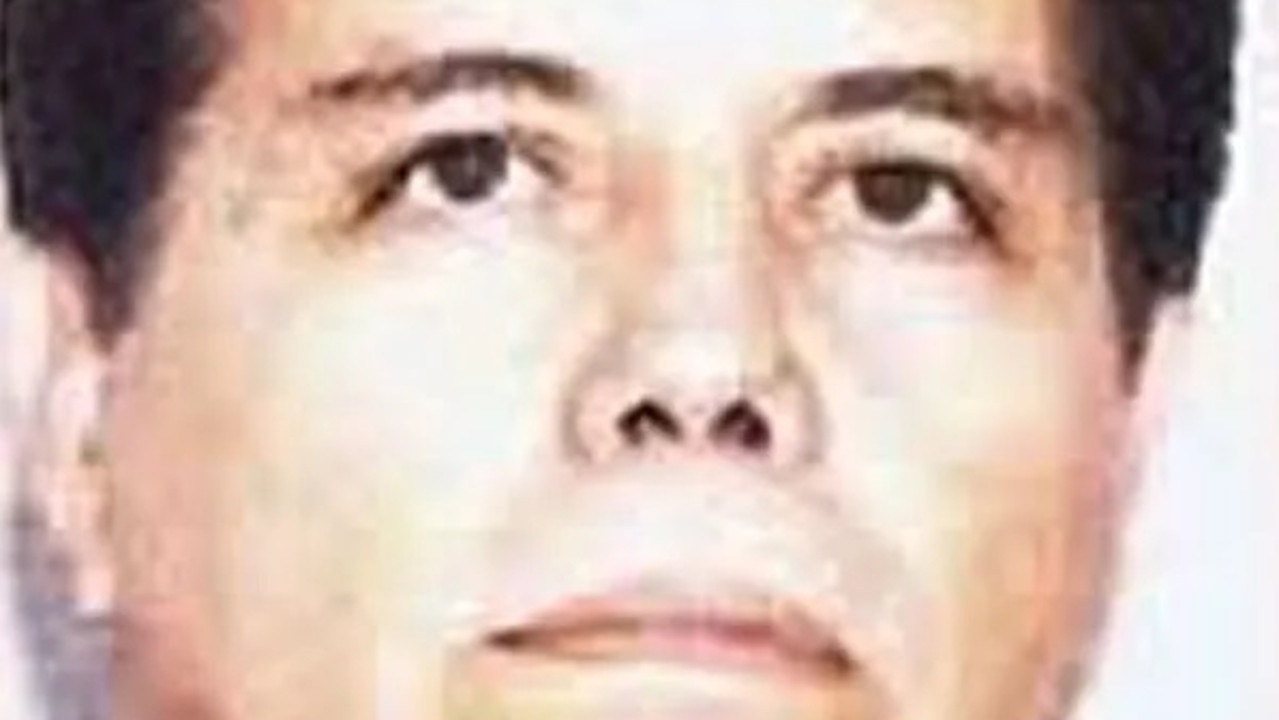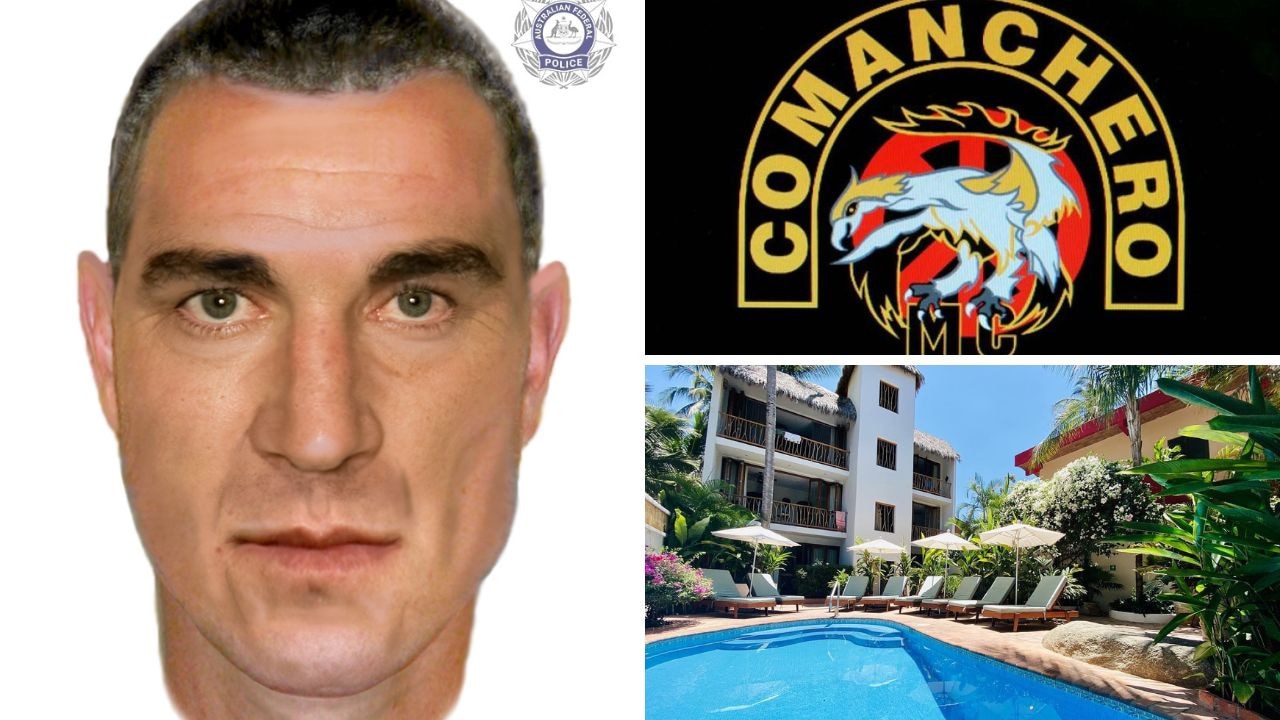Narcos on the front line: Inside deadly Mexican, US Narco tunnels
We take you inside three Narco tunnels that have made cartels filthy rich as they move drugs to Australia and the rest of the world. Watch the Narcos on the front line series now.
Narcos on the Front Line
Don't miss out on the headlines from Narcos on the Front Line. Followed categories will be added to My News.
The loaded M16 is at the driver’s right knee. He has two hands on the wheel; his shoulders are tense.
In the passenger seat, a black-gloved left hand is poised above a rectangular metal box with a red button.
The lights are flashing and the sirens are blaring in the American style white pick-up truck that makes a Toyota HiLux feel small.
Mexico’s Fiscalia General police force is racing through traffic in Tijuana on the way to a narcos tunnel.
They take no chances; the cartels have a bounty on the head of one of their commanders, and police stations have been bombed.
The black-gloved hand of the police officer passenger blows the pick-up’s horn.
It sounds like the foghorn on a ship.
Watch episode 5 of the Narcos on the front line series above.
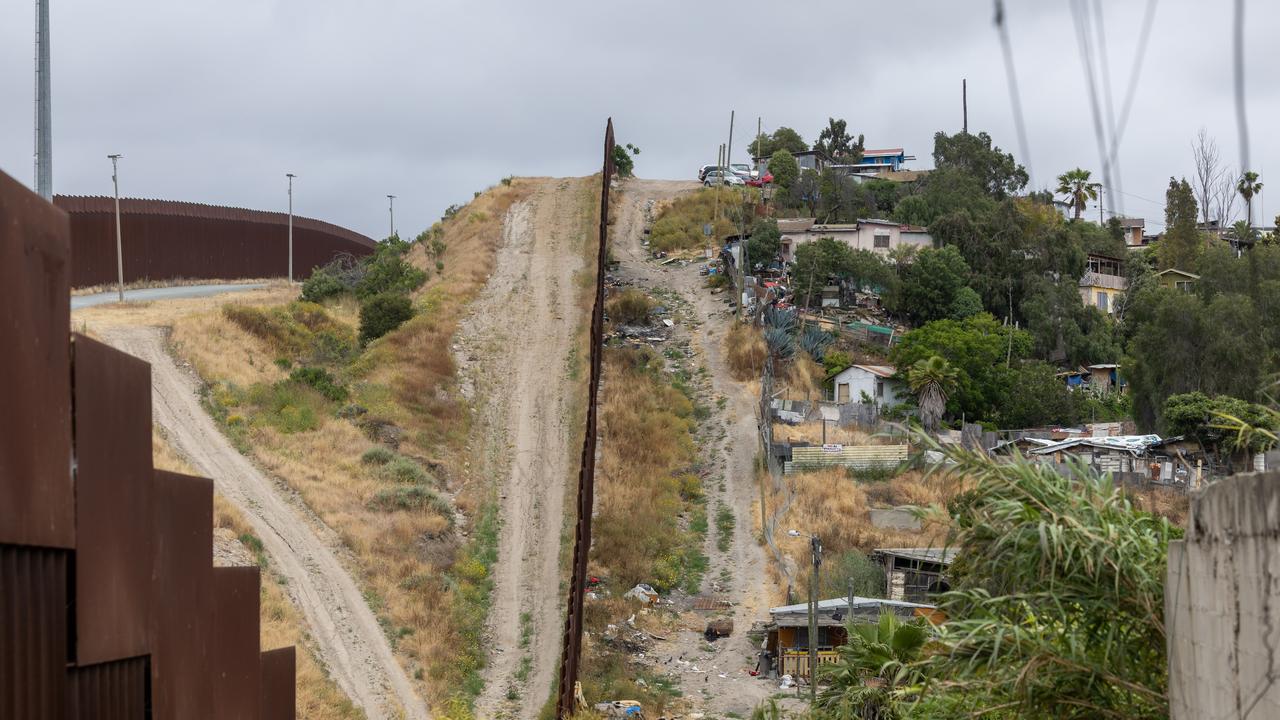
The small black sedan about to crash into the pick-up’s right hand side front quarter panel makes a last minute move, seconds before they crash.
The traffic eases and the pick-up stops outside a warehouse across the road from the United States and Mexico border.

The brown, almost rust-coloured, steel of Donald Trump’s wall can be seen about 80m away.
The Fiscalia General head inside, walking up a small set of stairs into the empty concrete room.
They turn to the left and go down a corridor which hits a dead end at what looks like a cupboard.
But then, like something out of a cheesy kids’ cartoon show, a secret door is revealed that opens into a cavity among the breeze block concrete wall.
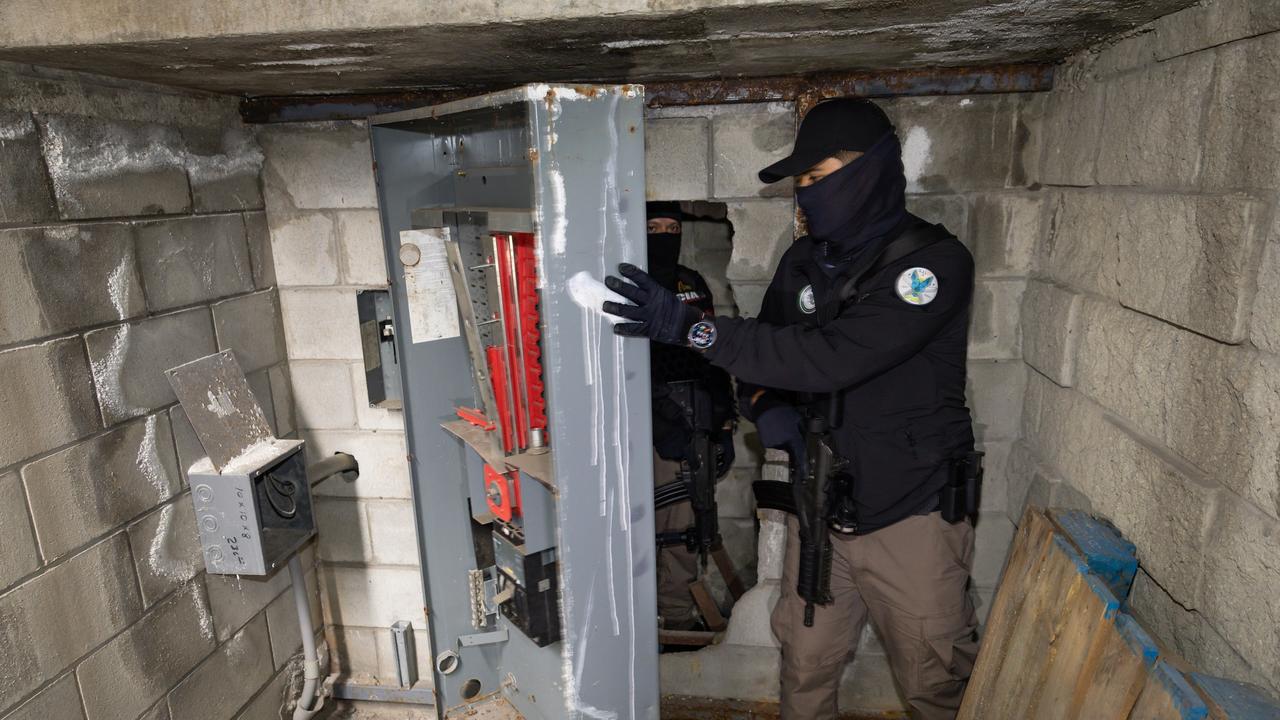
It’s completely dark but the torches on the end of the police machine guns, along with the red laser sight, light the way down a shaky metal ladder.
At the base of the ladder is a corridor.

Police have to duck their heads to get further in, their backs scraping on the concrete.
The air starts to feel different, it’s harder to breathe but then the corridor opens up into two large rooms.
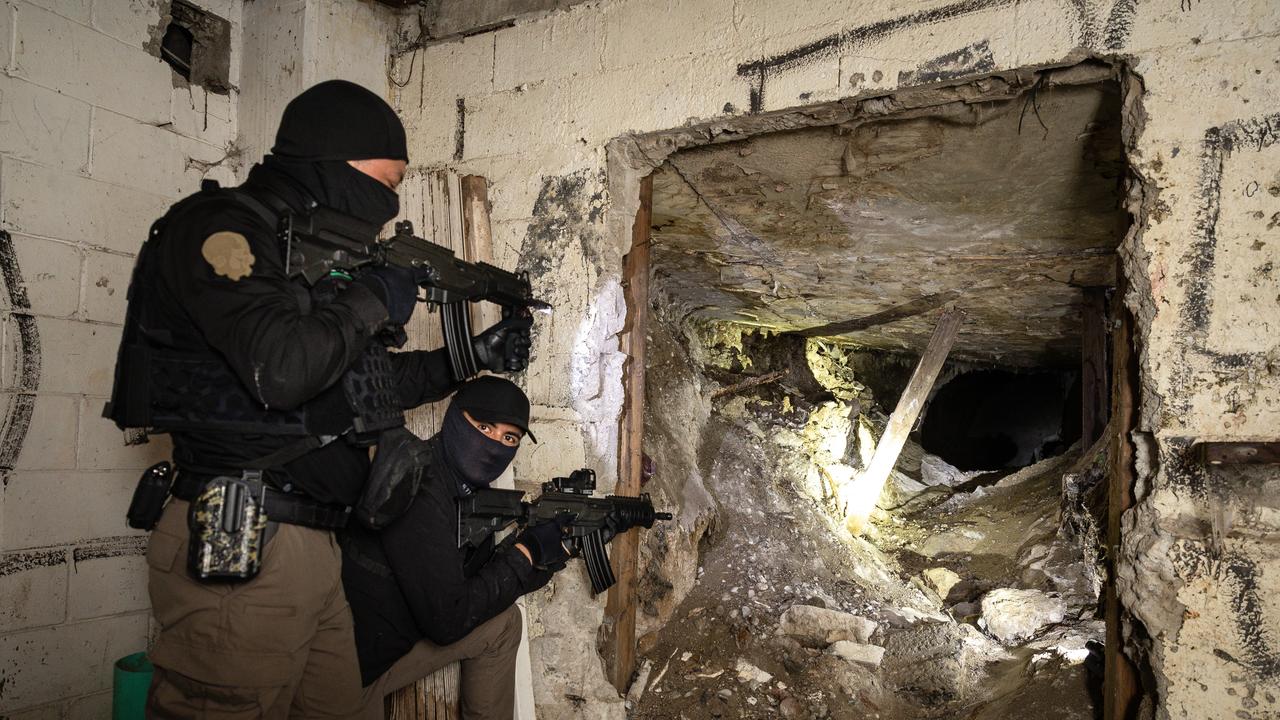
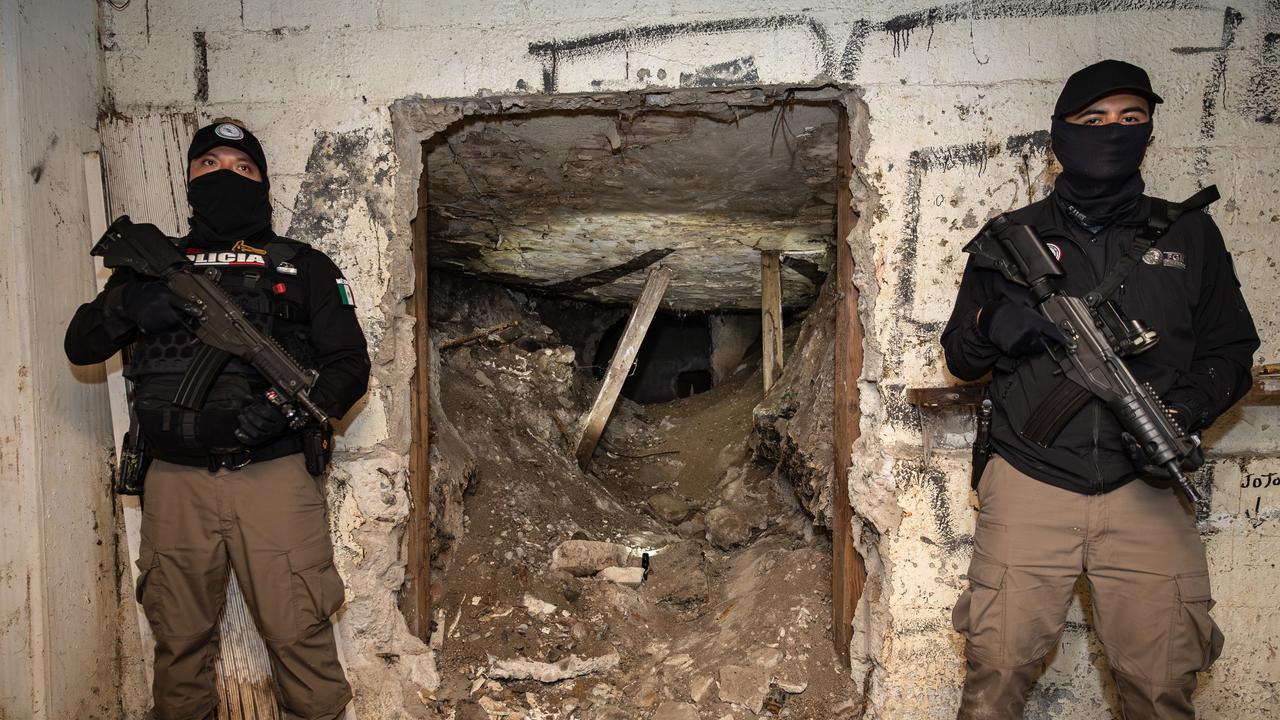
One is filled with dirt, similar to ones at building sites. The air is still hard to breathe.
There’s empty water bottles, coca-cola cans, deodorant, shoes, even a T-shirt hanging on a makeshift clothesline.
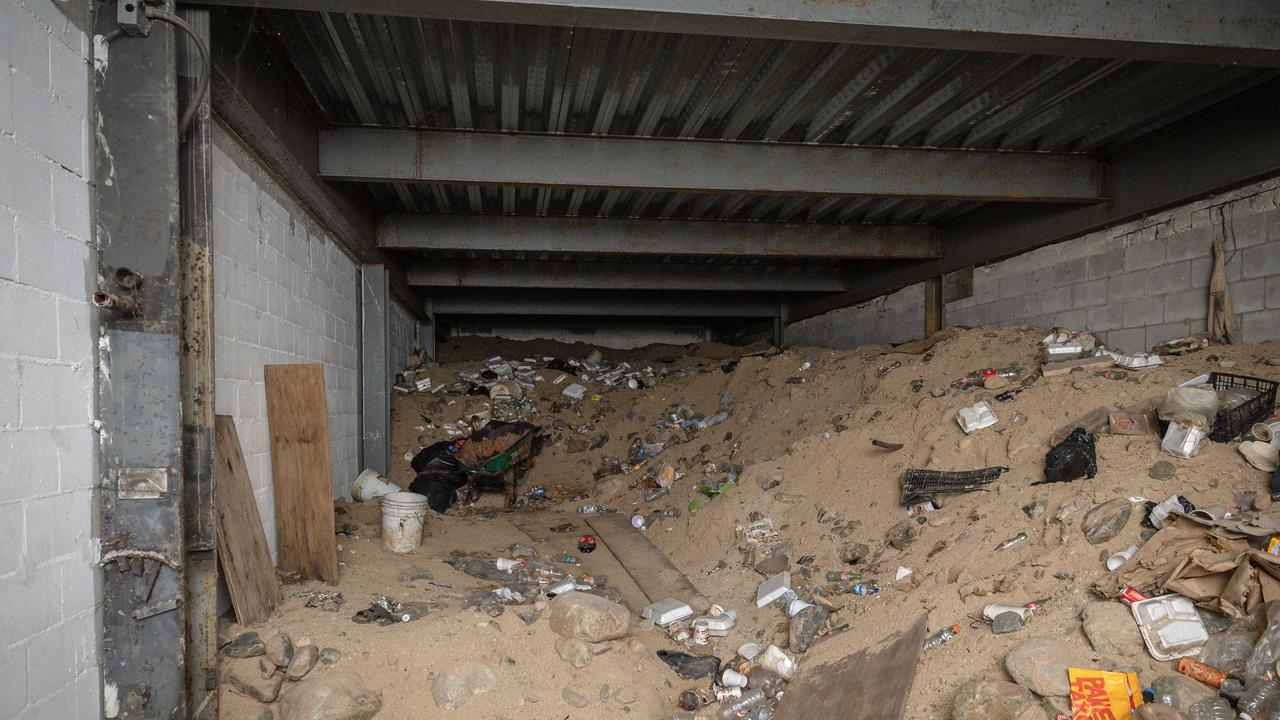
This is a building site, but there’s no health and safety officers here in high-visibility vests.
It’s a damp, dark, mouldy narco tunnel.
It’s hard to imagine anyone signing up to dig one of these tunnels, spending months underground, taking out dirt by hand in 20 litre buckets.

But these tunnels can make drug cartels hundreds of millions of dollars if the tunnellers are successful in getting underneath that wall into the world’s biggest drug market.
These dangerous access points funnel Colombian cocaine and Mexican meth into San Diego, which is just the other side of that rust-coloured wall.
The drugs don’t stop there though, Mexican police say those drugs also end up on ships to Australia, spreading misery and murder on our streets.
The tunnels go two ways. Guns, legally bought in Texas, flood into Mexico fuelling the executions, beheadings and dismemberment of cartel rivals.
”We’ve verified that after three or four days that a weapon purchased in Texas, we have it here in Mexico and it’s brand new,” Felipe de Jesús Gallo Gutiérrez, head of criminal investigations at the Fiscalia General says.
The cartels have also diversified into people smuggling, sending asylum seekers, often from Venezuela, into the United States through those tunnels.
The tunnel behind the fake cupboard is just one of many entry points into the United States.
The police climb back up the stairs and instead of jumping back into those white pick-ups, walk a block away.
Another door is opened.
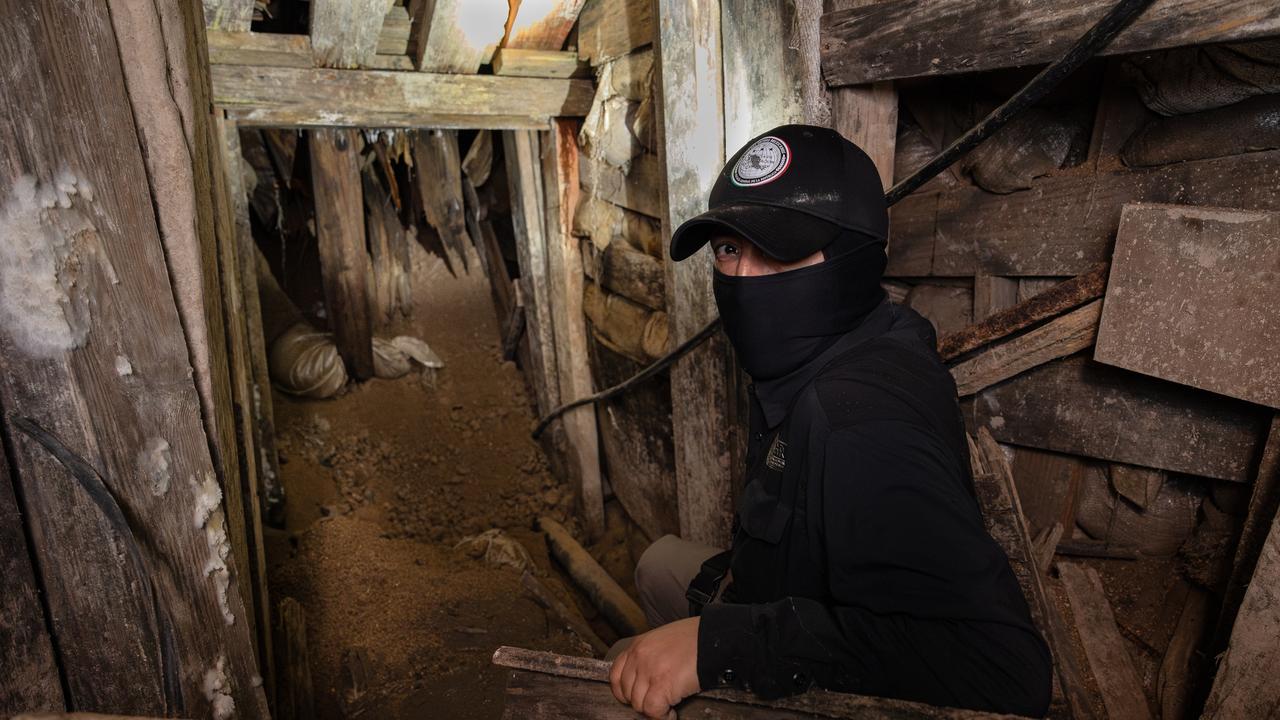
This one is across the road from the headquarters of Mexico’s National Guard - the cartels are so brazen, and secretive, the tunnel was built underneath the foundations of their buildings.
This tunnel’s entrance is hidden behind a fridge.
There is a bedroom there too and cooking facilities.
A professional surveyor’s instrument leans on the wall.
The Fiscalia General has deliberately collapsed this tunnel - planks of wood are everywhere.
They warn our photographer about going too far into the tunnel.
The wooden floor above the tunnel cracked, and partially collapsed as the photographs for this story were being taken when an Australian police officer went in to get a better look.
After more pictures were taken, the police move to another tunnel.
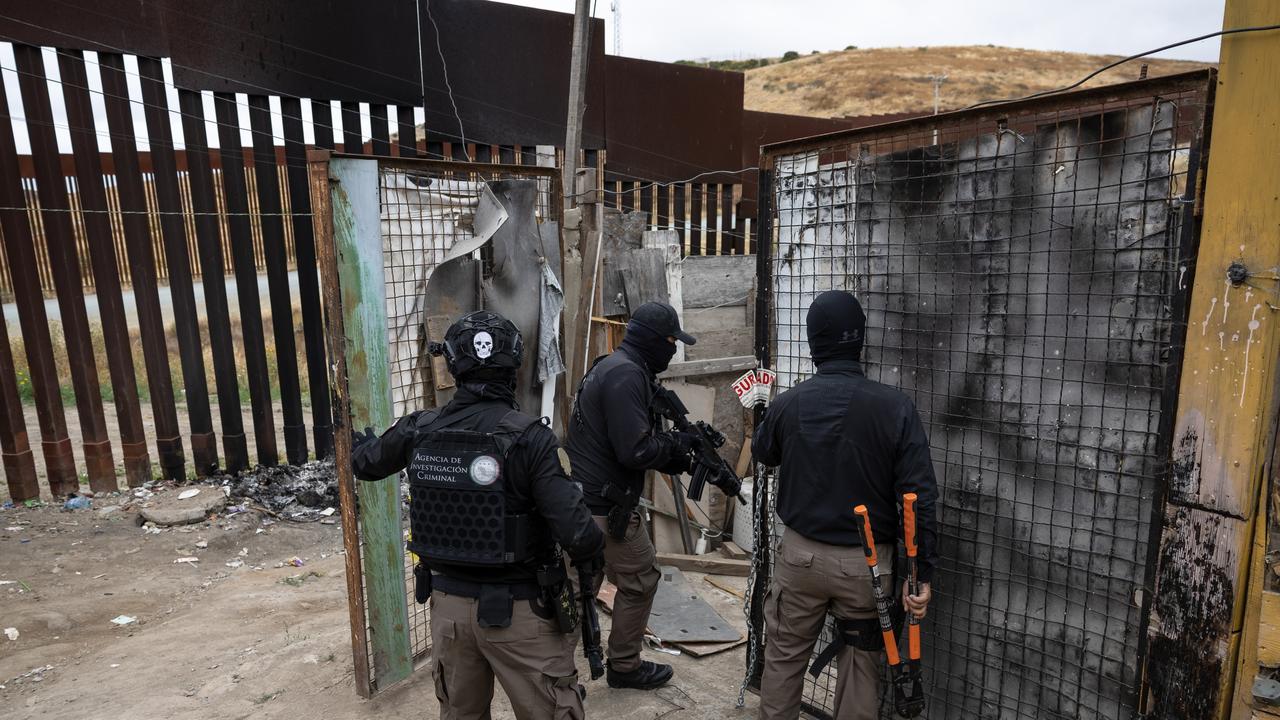
The black-gloved policeman again blasts traffic out of the way.
The third tunnel is just 14 metres of the “wall”.
When they arrive, police run down the hill when they see some suspicious movement near the dilapidated house that hid the tunnel entrance.
Police use orange-handled bolt cutters to break into the house, which reveals a tunnel deeper than a diving pool.
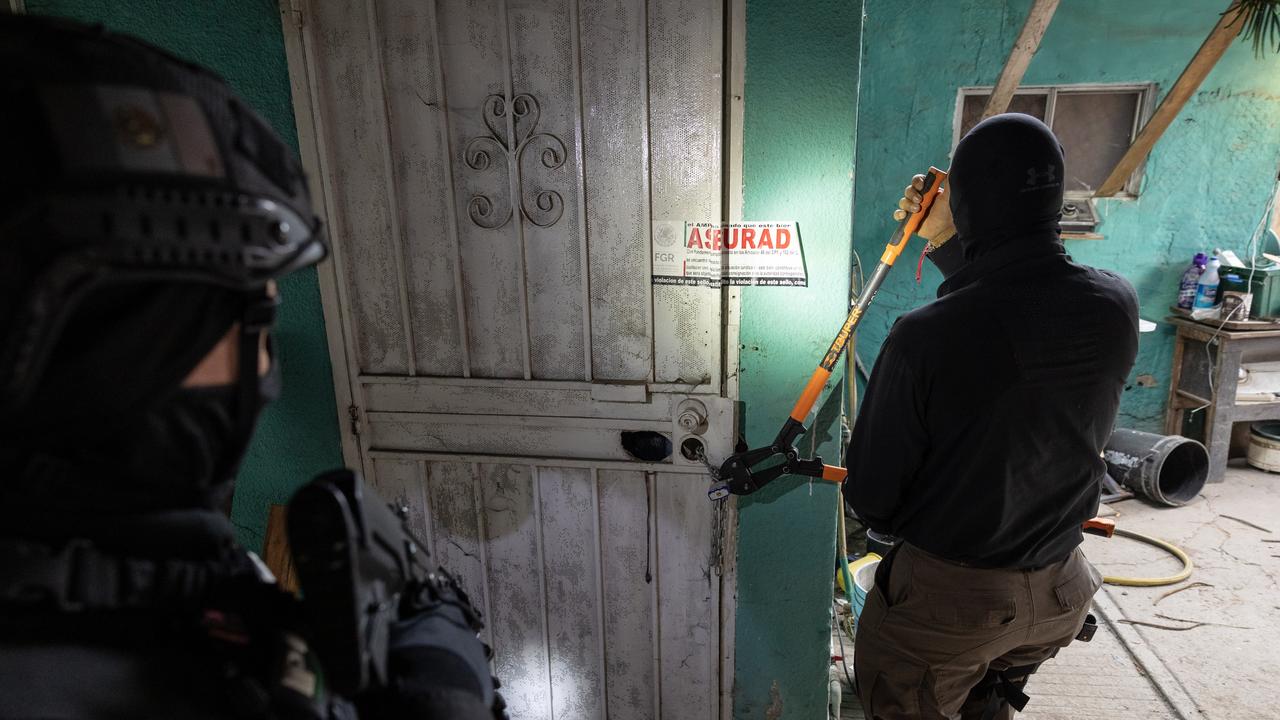
The shaft is reinforced with six by four framing timber, with a thin knotted rope hanging over the edge to allow cartel tunnellers to get to the bottom.

Just standing in the room feels shaky, as the floor wobbles under the feet of the police and our photographer.
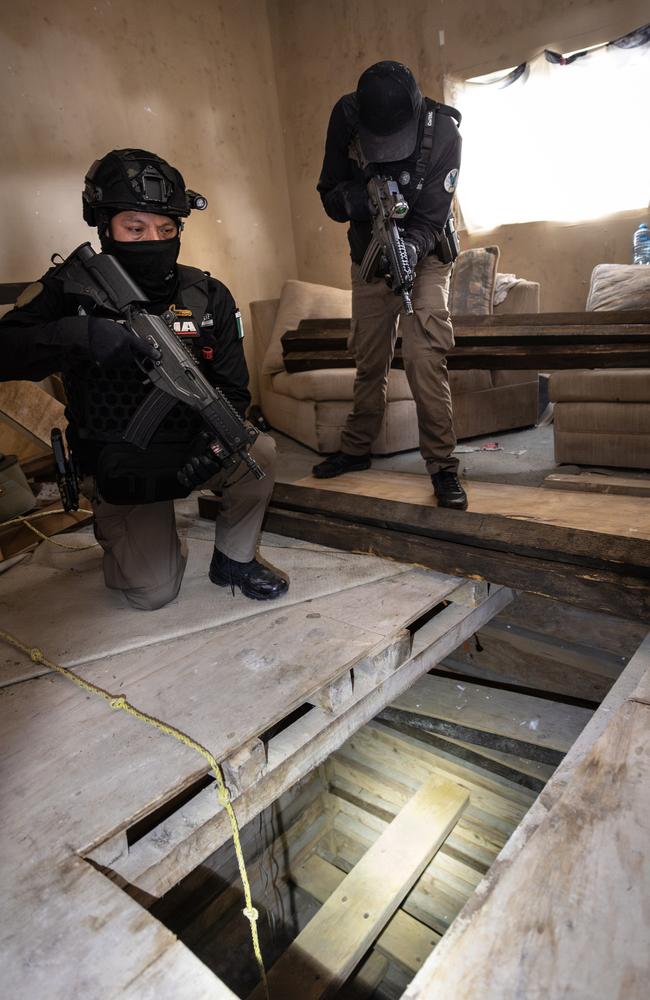
The police operation gains attention. Mexico’s army arrives to find out what was happening.
Across the other side of the wall, a United States authorities vehicle also drops by.
No-one is authorised to speak on the record for this story. All the police hide their faces behind masks
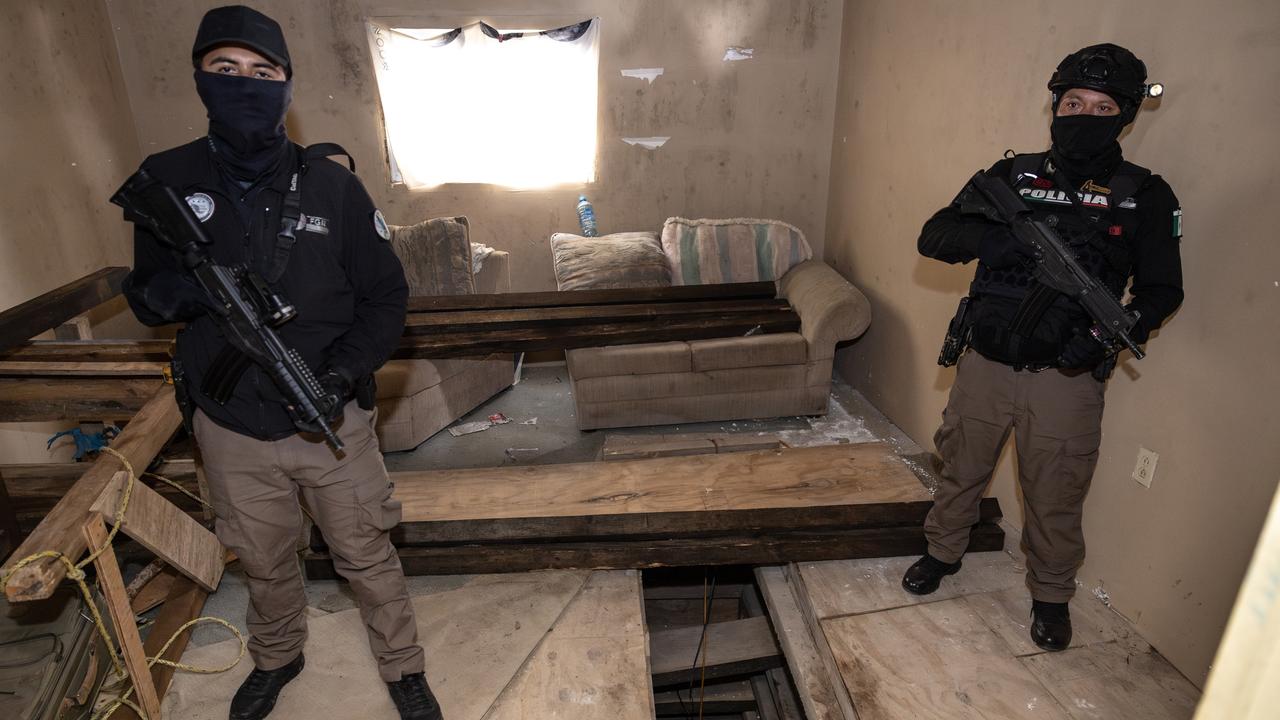
But over fish tacos in a local restaurant, a police engineer who has been inspecting these tunnels for decades, explains how they work.
The engineer maps out the tunnel’s technology on a restaurant napkin.
The standard tunnel was between seven and 12 metres deep, he says, based on some clunky Spanish and the Google translate app.
The tunnel is 1.4m to 1.8 high when it turns towards the border, enough to stand uncomfortably inside.

A pyramid design, 40cm at the top, widening to 80cm at the base, is used to spread the weight.
Plywood smuggled in from America lines the walls of the tunnel, which is reinforced with framing timber every 60cm.
Lights are placed at 1m intervals to allow the tunnellers to see, with a pulley system engaged to get rid of the freshly dug earth.
Most digging is done in the months when the ground is so soft it can “cut like a cake” with hand tools.
Jackhammers are used sparingly, with tunnels routed to avoid services like gas and water mains under buildings.
When the tunnellers, usually a team of seven, make it to the other side, they open up a world of riches for their cartel bosses.
Some, however, never make it, with tunnels regularly collapsing. Just a few more victims of the cartels’ deadly desire for money and power - paid for by Australian drug users.
Originally published as Narcos on the front line: Inside deadly Mexican, US Narco tunnels


